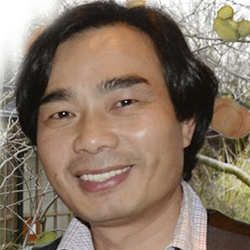LIMI MAO
Research Professor based at Nanjing Institute of Geology and Palaeontology, CAS (NIGPAS). He is a Cenozoic (most Quaternary) palynologist in Department of Palaeobotany and Palynology at NIGPAS, where the father of Palaeobotany in China, Sze Hsing-Chien, had worked for life long. His research interests mainly focus on pollen morphology for fossil taxa and extant plants in China, Quaternary palynology, and mangrove vegetation history and its past biogeography. He is one of the key contributors of the book Atlas of Quaternary Pollen and Spores in China (both Chinese and English edition).
«Huge congratulations on this impressive team work! I very much enjoy reading the English version of Iberian Paleoflora and Paleovegetation presented in three volumes, which are tremendous successes for all the coordinators, editors, authors, artistic and graphic workers, translators and other workers in the team to produce such informative and useful volumes. All the scientific illustrations, photos, pollen diagrams and pollen/spore plates are elegantly presented.
Cenozoic in the Iberian Peninsula witnessed revolutionary changes in terms of flora and vegetation, for instance, 1) mangrove (Avicennia) along the coastal areas prevailed during the warm period between Palaeocene and Pliocene, also highlighting the legacy of the paleotropical world of the Cretaceous; 2) the Sclerophyllous evergreen oak (section ilex in the genus Quercus) evolved and survived in the refuges during Pleistocene; 3) Holocene vegetation dynamics were shaped both by climate changes and human impacts, which were extensively documented by numerous pollen records over the Iberian Peninsula. It’s hard to mention all the highlights of these three volumes, I just want to simply put, it’s a marvelous paleoflora and paleovegetation encyclopedia for readers to understand evolutionary story of flora and vegetation, as well as climatic and environmental changes during the Cenozoic in Iberia, southwestern Europe.«

